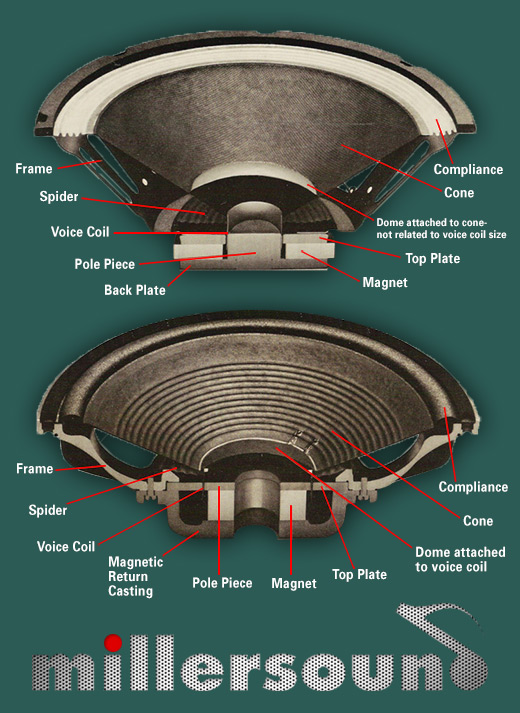Speaker Anatomy:
A speaker or loudspeaker is a device known as a transducer.
What’s a transducer?
A transducer is a device that receives a signal in the form of one type of energy and converts it to a signal in another form. As such, a speaker (or loudspeaker) is a transducer. Speakers take electrical energy and transform it into the kinetic energy of sound. It is the cone of the speaker that emits the sound.
How does the cone produce sound energy?
Speaker cones, which are constructed of lightweight material, (paper, carbon fiber, aluminum, Kevlar, etc), are driven by the speaker’s voice coil. The cone itself is suspended (see diagram at right, or below if you’re on a smartphone) by a circular or round frame called the “basket.” The flexible suspension material which allows the cone to move “in and out,” (labeled compliance in the diagram) can be foam, rubber, rolled paper, treated cloth, etc. A voice coil, which is centered in the frame, yet physically attached to the cone, causes the cone to move (in one direction or the other) when an audio signal (ac) passes through said voice coil. At the voice coil’s center is a fixed pole piece ("magnetically charged" and physically connected to the frame) which provides a “reference magnetic force” against which the voice coil acts.
While the above is rudimentary, it provides a basic understanding as to how the components of a speaker produce sound. There are many other factors which must be considered when designing, building or rebuilding speakers. Do look over the diagram at right, (or again, below if you’re on a smartphone) to become familiar with the different components that are the makeup of common speakers.
Cutaway of components..

